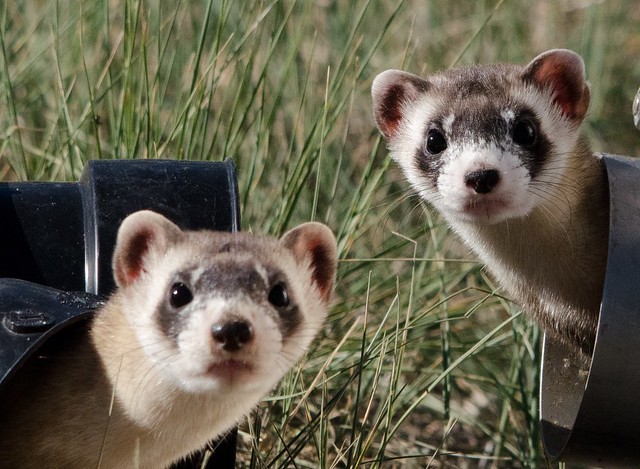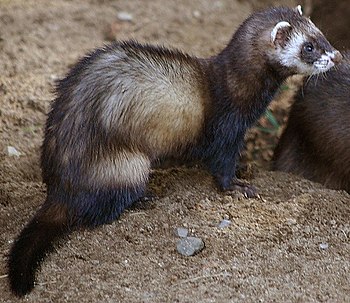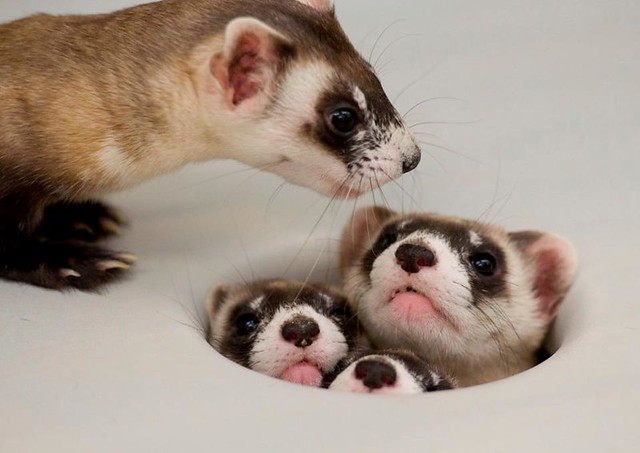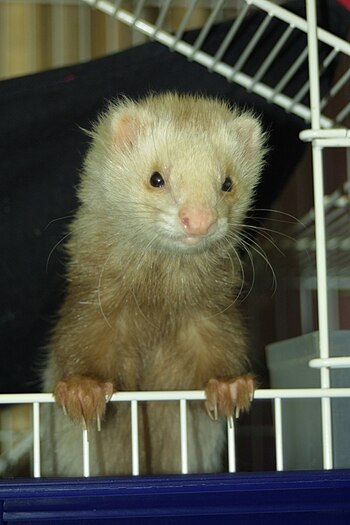It used to be that if you bought a ferret your only option was cat food. Luckily for ferret pet owners today, there are a plethora of choices and options when considering what to feed your ferret. Proper ferret nutrition is not only doable but also absolutely necessary to ensure your ferret is happy, healthy and will be a part of your family for years to come.
 |
| Photo by USFWS Mountain Prairie |
Because ferrets are meat eaters, they need to be a fed carnivorous diet high in protein and fat. It is best to keep the protein levels at thirty-four percent or higher and the fat content at a minimum of twenty percent. Because ferrets are rising in popularity, there are several brands in the marketplace today that specifically target ferrets. Zupreem, Totally Ferret and Marshall Premium Ferret are all excellent choices. When choosing food for your ferret, make sure that the first ingredient listed is an animal based protein such as poultry or lamb. If you are reading the packaging and see any type of grain come up as the first or second ingredient, skip it and move on to another brand.
Because ferrets eat based on immediate need, they usually will not overeat. Just make sure to have plenty of water and food available to your ferret throughout the entire day and night. Visit a pet store to find an appropriate food dish for your ferret. Being playful animals, ferrets can make a mess if the food dish is not weighted to avoid unnecessary spills.
Knowing what not to feed your ferret for proper nutrition is just as important. Never, ever feed your ferret dog food. If you do have a dog, make sure you keep any dog food completely inaccessible to your ferret. Ferrets also do not need any fruits, vegetables or dairy products to thrive. Due to their short intestinal tracts, such foods can lead to serious health problems.
Like any animal, ferrets love treats! When choosing treats for your ferrets, however, take care to stay away from anything sugary. You can make your own treats such as cooked meat or you can choose to purchase an approved ferret snack from the pet store. It is best to avoid giving your ferret any snack that is appealing to humans like peanut butter, chips or candy.
Proper ferret nutrition is not impossible and is actually relatively easy to achieve. The biggest obstacle to a ferret's health is most often its owner since they are at the mercy of your vigilance and care for their health. Just be sure to keep the diet high in good fats and protein and leave out any plant-based ingredients for a happy, healthy pet!









